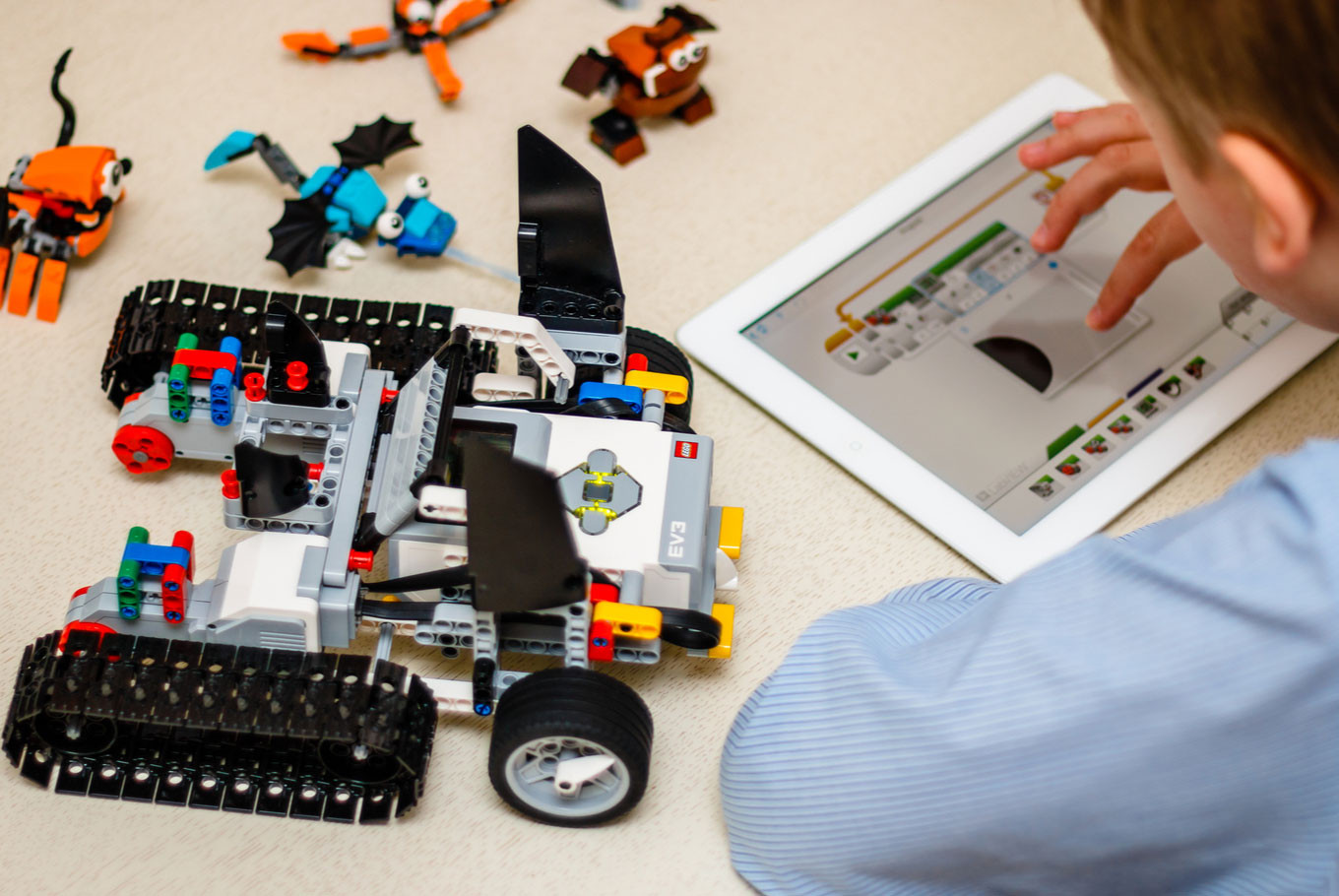Popular Reads
Top Results
Can't find what you're looking for?
View all search resultsPopular Reads
Top Results
Can't find what you're looking for?
View all search resultsComputer programming in curriculum: About time?
The trend has apparently shifted toward democratization of robotics, and consequently programming as well, as the heart of robotics.
Change text size
Gift Premium Articles
to Anyone
J
apan has been widely known as among the forefronts in robotics. Ever since the introduction of Asimo, a humanoid robot that could interact with humans effortlessly in early 2000, innovations in this sector have never ceased to amaze the public.
The trend in robotics in Japan seems to progress steadily. However, during a recent short visit to Japan, I could not help notice a slight shift in the trend.
Previously, robotics had been mostly dominated by several big names of the private sector, such as Honda, Toyota, Kawasaki, to name a few. But now more players have entered the market.
Tamiya, traditionally known as a maker of remote-controlled car toys, has introduced vast collections of robot kits for kids. One of the most recent flagship products is Cam-program Robot, a robot kit whose motion can be programmed without any programming. They also started the Tamiya Robot School, an extracurricular activity targeting elementary students.
Even Glico, a company from a distant field of food industry, have launched their app named Glicode for a simple programming. Communities are also participating, such as the Programming Club Network (PCN) with nationwide branches, It promotes the use of Ichigojam, a low-cost single board PC that lets students get their hands on programming.
All these new players share a striking similarity: their target is the younger audiences as early as the elementary students.
The trend has apparently shifted toward democratization of robotics, and consequently programming as well, as the heart of robotics. They now are all reaching the masses in an unprecedented manner, never seen before in the past several decades.
But what is behind all this sudden change? Many factors are at play, but arguably the new education policy from the government is the dominant push factor. In April 2016, Prime Minister Shinzo Abe declared Japan will make programming education compulsory for all levels of education from 2020. Responding to the call, the private sector and communities alike began taking up their separate roles toward 2020.
Japan is actually not the first country to implement this seemingly drastic change in the curriculum. In 2014, the United Kingdom embarked on an ambitious mission to get children into programming by replacing the information and communications technology component in the previous curriculum with “computing” for children as young as five. Australia has also implemented “digital technologies” as a compulsory subject in the curriculum, launched in 2015. Many other countries have similar policies including New Zealand, and several European countries such as Poland, Finland and Estonia.
Now in Indonesia programming is obviously not part of the current 2013 curriculum, but is there any indication toward such implementation? The good news is, there has been a positive gesture from the government.
In 2016, Communications and Information Minister Rudiantara remarked, “In many countries, programming education has been intensively implemented from the junior high school level. That is why there needs to be a paradigm shift that becoming a programmer can begin earlier.”
“By implementing programming early in school, students with an interest in becoming a programmer can be trained so that they will be ready for further education in a higher level,” he said.
The remark had triggered a positive discussion involving the Education and Culture Ministry.
Though heartening, Rudiantara’s remark seems to miss the main objective of introducing programming into the curriculum. In many scientific publications related to this topic, many researchers posit that preparing the workforce, especially in ICT, is important but only deemed as a by-product.
The main objective, however, revolves around the special traits programming activities instill in children, e.g. general problem-solving and design skills, or to borrow the terminology from the Japanese MEXT, programming shikou (programming-like thinking).
Steve Jobs once said, “Everyone should learn how to program a computer, because it teaches you how to think.”
Therefore, some narratives suggest that learning programming will benefit children regardless of their ultimate career option. The approach is comparable to the reasoning for giving children the chance to learn music, sport, or a foreign language in the early stage.
That also explains why many countries have no reserve at all in making programming compulsory from the elementary school level. But don’t imagine a 7-year old typing some programs on a PC. For the elementary school level, the dominant approach is to first introduce logical reasoning skill, among others, without a computer.
Take the case of Computer Science Unplugged (https://csunplugged.org)from New Zealand. The initiative provides a vast range of education materials “… through engaging games and puzzles that use cards, string, crayons and lots of running around.”
The current 2013 curriculum (or the revised version) is undeniably a huge improvement, by being an outcome-based curriculum with an emphasis on character building. But the trend of programming in education develops fast and Indonesia should establish the vision on how to incorporate this properly.
Copy-pasting blindly from the UK or Japan simply will not work. This is because a curriculum is a delicate matter unique to each country and many factors are also at play in Indonesia -- consider the vast geography, inequality of teachers’ quality, etc. Programming also encompasses a wide range of topics, and priority might be needed to be set for Indonesia’s context. Therefore, careful planning is more than necessary. The narrative should be developed further to become a mainstream. Only by then all stakeholders including universities, private sectors, and communities can join hands to partake in this huge endeavour.
And most importantly, we need to begin now.
***
The author holds a PhD from the Tokyo Institute of Technology and is a lecturer with the Department of Mechanical Engineering, University of Indonesia (UI). He was a jury member for the National Flying Robot Contest 2018 held by the Research, Technology and Higher Education Ministry. The above views are personal.










